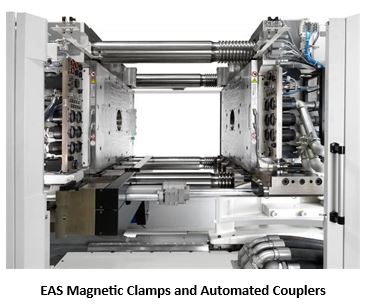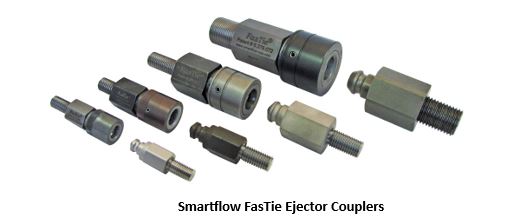
Unlocking Operational Excellence: How SMED Powers Up Your OEE
In today’s highly competitive industrial landscape, optimizing OEE has become a top priority for organizations striving to remain competitive and profitable. This is where SMED steps in as a powerful methodology that not only streamlines changeovers but also plays a pivotal role in enhancing OEE by reducing downtime, increasing equipment utilization, and improving overall operational effectiveness.
Here are some SMED ideas, techniques and products that will save time, and money and improve safety in your injection molding processes and procedures.
1. Standardize Tooling: Standardize and modularize your molds and tooling components to make them easier to swap in and out. This reduces the need for custom setups for each product.
2. Quick-Change Clamping Systems: Implement quick-change clamps or fixtures for securing molds in place. These should be easy to operate and require minimal adjustments.

3. Preparation Checklists: Develop detailed checklists for setup and preparation tasks. Ensure all necessary materials, tools, and personnel are ready before the changeover begins.
4. Color-Coded Components: Use color-coded components and connectors to simplify the identification and alignment of mold parts during changeovers.
5. Tool Carts: Invest in mobile tool carts equipped with all the necessary tools and components. These can be rolled into the clean room for quick access during changeovers.
6. Parallel Setup: Identify tasks that can be performed simultaneously by different team members to reduce setup time. For example, while one person removes the previous mold, another can prepare the new mold.
7. Quick Disconnects: Install quick disconnects for ejectors and utilities such as water, air, and electricity to minimize the time needed to connect and disconnect these services.

8. Pre-Heating Molds: If applicable, pre-heat molds outside the clean room to reduce the time required for temperature stabilization once inside.
9. Error-Proofing (Poka-Yoke): Implement error-proofing mechanisms to prevent setup errors, such as using pins and guides that only fit in the correct orientation.
1o. Documentation and Training: Maintain detailed setup documentation and provide training to operators to ensure that they follow standardized procedures consistently.
11. Parallel Mold Changes: If your set up allows it, consider having multiple injection molding machines so mold changes can happen in parallel with production, reducing downtime.
12. Visual Management: Use visual management tools like shadow boards and floor markings to help operators quickly locate and return tools and components to their designated places.
13. Video Recordings: Record and set up procedures on video to capture and augment best practices and identify areas for improvement in the setup process.
14. Continuous Improvement: Encourage a culture of continuous improvement where operators and technicians are encouraged to suggest and implement ideas for reducing setup times.
15. Time Tracking: Implement a system for tracking setup times and regularly review performance data to identify bottlenecks and areas for improvement.
Remember that the specific SMED ideas you implement should be tailored to your injection molding setup and the products you produce. Continuously involve your team in the process of identifying and implementing improvements to reduce setup times and increase efficiency.
For more information on SMED and OEE:
Change to progress – EAS Change Systems
